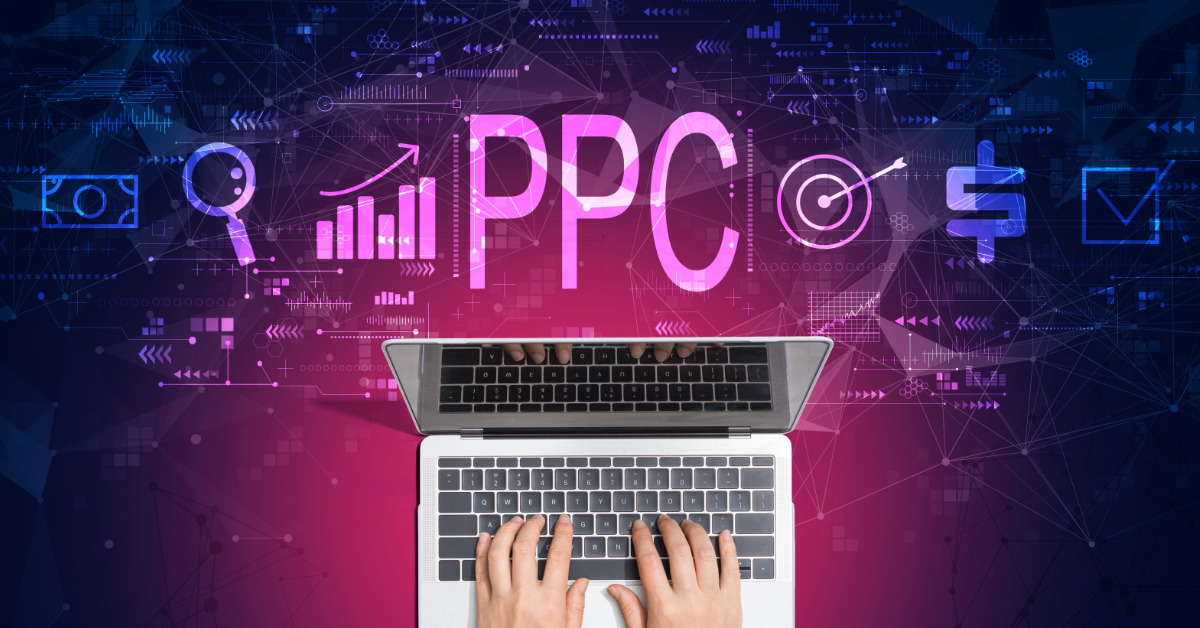Pay-per-click (PPC) advertising continues to be a powerful digital marketing tool for businesses looking to generate leads, drive traffic, and increase sales. However, with platforms evolving, competition intensifying, and AI and automation reshaping campaign management, mastering PPC advertising best practices has never been more critical. In this comprehensive guide, we dive into ten proven strategies to help you elevate your campaigns, improve your ROI, and stay ahead in 2025.
1. Understand Your PPC Goals: The Foundation of Campaign Success
Before launching a single ad, it’s crucial to define what you want to achieve. PPC goals should align with your broader marketing objectives and follow the SMART framework (Specific, Measurable, Achievable, Relevant, Time-bound).
Common PPC goals:
- Generate qualified leads
- Increase eCommerce sales
- Boost brand visibility
- Promote a specific offer or event
Matching goals with the buyer’s journey ensures that ad formats and messaging resonate with your audience. For instance, search ads are ideal for bottom-funnel intent, while display or video ads work well for top-funnel awareness.
Stat: According to WordStream, campaigns with clearly defined objectives see up to 30% higher conversion rates than those without.
2. Conduct Thorough Keyword Research and Competitor Analysis
Keyword research remains at the heart of PPC success. It determines not only how often your ads are seen but also how relevant they are to searcher intent.
Best practices for keyword research:
- Use Google Keyword Planner, SEMrush, Ahrefs, or Ubersuggest to identify opportunities
- Focus on long-tail keywords to capture high-intent searches
- Group keywords by theme or funnel stage
- Regularly update negative keyword lists to exclude irrelevant traffic
Understanding what your competitors are bidding on and how they position their ads can provide insights to sharpen your own strategy. Tools like SpyFu, iSpionage, and Google’s Auction Insights can help uncover competitor keywords, bidding behavior, and ad copy patterns.
3. Structure Your PPC Campaigns for Optimal Performance
A well-structured PPC account is easier to manage, improves relevance, and leads to better results.
Key campaign structure tips:
- Organize campaigns by product/service category or business goals
- Use Single Keyword Ad Groups (SKAGs) for maximum relevance (or modern intent-based groupings)
- Separate campaigns by match type, device, or geographic location
- Regularly review and prune low-performing keywords and ad groups
Example: A B2B SaaS company restructured its campaigns around user intent (awareness, consideration, conversion) and saw a 28% drop in CPA within two months.
4. Master Ad Copywriting and Creative Formats
Great PPC ad copy doesn’t just attract clicks – it sets the stage for conversions. With competition high, your copy must stand out while maintaining relevance.
Copywriting best practices:
- Include the primary keyword in the headline and description
- Use compelling CTAs (e.g., “Get Your Free Demo,” “Start Saving Today”)
- Highlight unique value propositions (free shipping, 24/7 support, etc.)
- Utilize all available ad extensions (sitelinks, callouts, structured snippets)
Responsive Search Ads (RSAs) have become the default in Google Ads, enabling advertisers to test multiple headlines and descriptions dynamically. Ensure your creative assets (especially for display and video ads) are high-quality, mobile-optimized, and A/B tested regularly.
5. Optimize Landing Pages for Higher Conversion Rates
Driving traffic is only half the battle. Your landing pages need to be optimized to convert.
Landing page optimization checklist:
- Ensure message match between ad and page headline
- Keep design clean and mobile-first
- Use short forms or single-click conversion actions
- Add social proof (reviews, testimonials)
- Test variations with tools like Unbounce or Instapage
Stat: According to HubSpot, companies with 10-15 optimized landing pages see 55% more conversions than those with fewer.
6. Use Smart Bidding and AI-Powered Features Wisely
Google Ads’ smart bidding strategies use machine learning to optimize bids for conversions and value. But automation isn’t a silver bullet – it needs oversight.
Smart bidding strategies to consider:
- Target CPA: Set your desired cost per acquisition
- Target ROAS: Optimize for return on ad spend
- Maximize Conversions: Best for campaigns with clear conversion goals
- Enhanced CPC: Allows manual bidding with automated adjustments
Start with sufficient conversion data (at least 30 conversions in 30 days) and monitor performance regularly. Use portfolio bid strategies to manage multiple campaigns under one target.
Insight: Over 80% of Google Ads spend now flows through automated bidding, yet campaigns with manual oversight consistently outperform set-and-forget setups.
7. Track the Right Metrics and Set Up Conversion Tracking Correctly

Without accurate tracking, you’re flying blind. Ensure you have robust analytics in place to measure what matters.
Essential PPC metrics:
- Click-Through Rate (CTR)
- Cost Per Click (CPC)
- Quality Score
- Conversion Rate
- Cost Per Acquisition (CPA)
- Return on Ad Spend (ROAS)
Set up conversion tracking using Google Tag Manager, and integrate Google Analytics 4 (GA4) to analyze user behavior beyond the click. Don’t forget about assisted conversions and attribution modeling to get a full view of performance.
8. Leverage Retargeting and Audience Segmentation
Most visitors don’t convert on the first interaction. Retargeting helps re-engage users who’ve shown interest, while segmentation lets you tailor messages more effectively.
Retargeting tips:
- Segment users by page viewed, product interest, or funnel stage
- Exclude converters to avoid wasted spend
- Use sequential messaging to guide users down the funnel
Segmentation strategies:
- Use Google’s in-market and affinity audiences
- Create lookalike audiences based on high-value customers
- Layer demographic and interest targeting for precision
Case Study: A retail brand used segmented retargeting on Facebook and Google Ads, improving ROAS by 300% over generic remarketing efforts.
9. Stay Ahead with Multichannel and Cross-Platform PPC
Limiting your campaigns to a single platform can mean missed opportunities. A multichannel approach spreads risk and increases reach.
Key platforms to integrate:
- Google Ads (Search, Display, Shopping, YouTube)
- Meta Ads (Facebook + Instagram)
- Microsoft Advertising (Bing)
- TikTok Ads
- LinkedIn Ads (for B2B)
Use consistent messaging across platforms, but tailor creatives and CTAs to suit the platform’s context and audience behavior. Track performance by channel to optimize budget allocation.
Stat: Businesses running multichannel PPC campaigns see a 25% higher ROI on average.
10. Perform Regular Audits and A/B Tests to Improve Performance
PPC is not a set-it-and-forget-it channel. Regular audits and tests help you identify inefficiencies and scale what works.
PPC audit checklist:
- Review keyword performance monthly
- Pause low CTR ads or adjust targeting
- Check for Quality Score issues
- Analyze budget distribution by campaign
A/B testing ideas:
- Test ad copy variants (headline, CTA)
- Experiment with different landing page layouts
- Compare manual vs smart bidding
Tools like Optmyzr, Adalysis, and Google Ads Experiments simplify testing and auditing.
Conclusion: Apply These PPC Best Practices to Maximize Results in 2025
Staying competitive in the 2025 PPC landscape means blending strategy, creativity, and technology. From defining goals and structuring campaigns to leveraging AI and cross-channel strategies, these ten best practices are essential for boosting your return on ad spend.
Remember, the most successful advertisers are not the ones with the biggest budgets, but those who optimize relentlessly, learn from data, and adapt to change.
Ready to take your PPC performance to the next level?
Start by auditing your current campaigns using the strategies above, or download our free [PPC Audit Checklist] to get actionable insights fast.
FAQ
Q: What is a good CTR for Google Ads in 2025?
A: The average CTR for search ads is around 6.66%, but this varies by industry. A good benchmark is anything above 4%.
Q: How do I improve my Quality Score?
A: Improve your ad relevance, expected CTR, and landing page experience. Use tightly themed ad groups and ensure message match between ad and landing page.
Q: Should I use smart bidding for small budgets?
A: Yes, but ensure you have enough conversion data. Start with Maximize Conversions and monitor performance closely.
Q: Is PPC worth it for small businesses?
A: Absolutely. With the right targeting, copy, and budget management, PPC can generate high-quality leads even on smaller budgets.
Q: How often should I audit my PPC campaigns?
A: At least once per month. Weekly reviews are recommended for high-spend accounts.
















